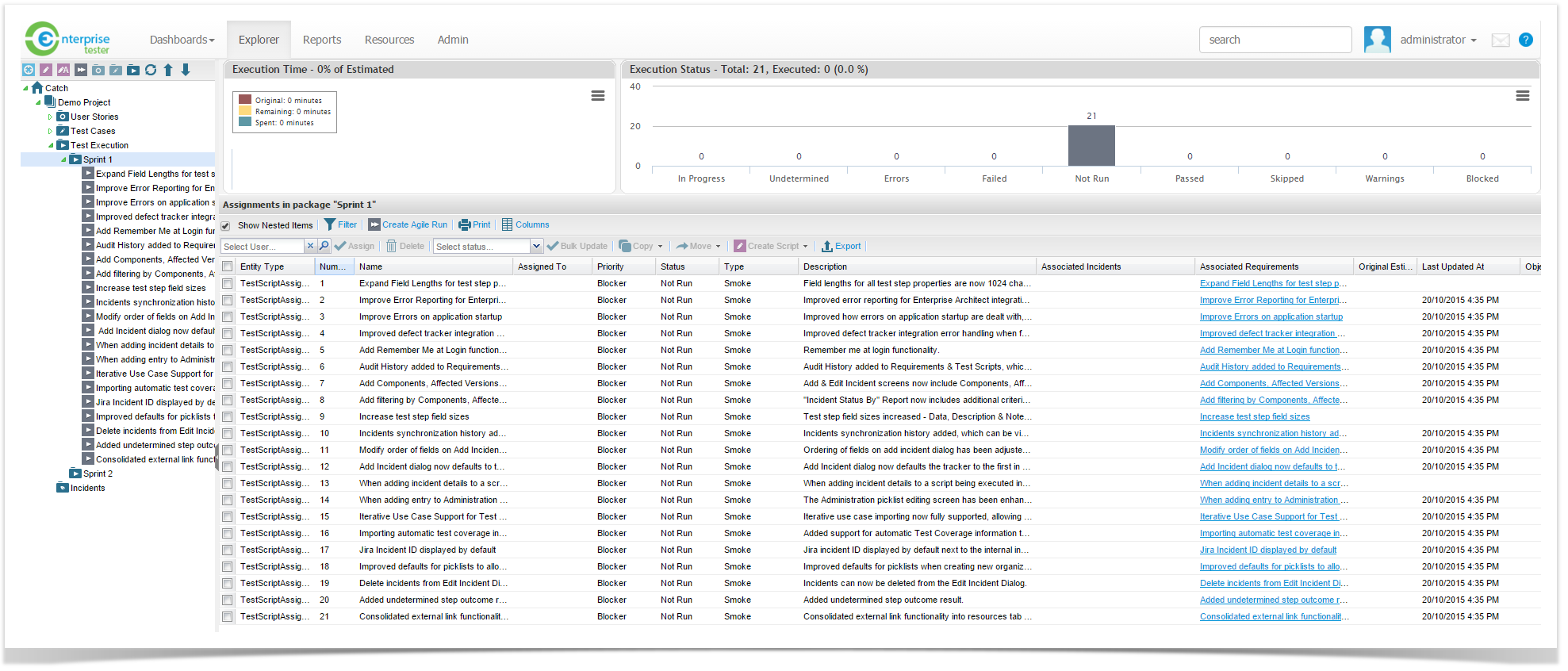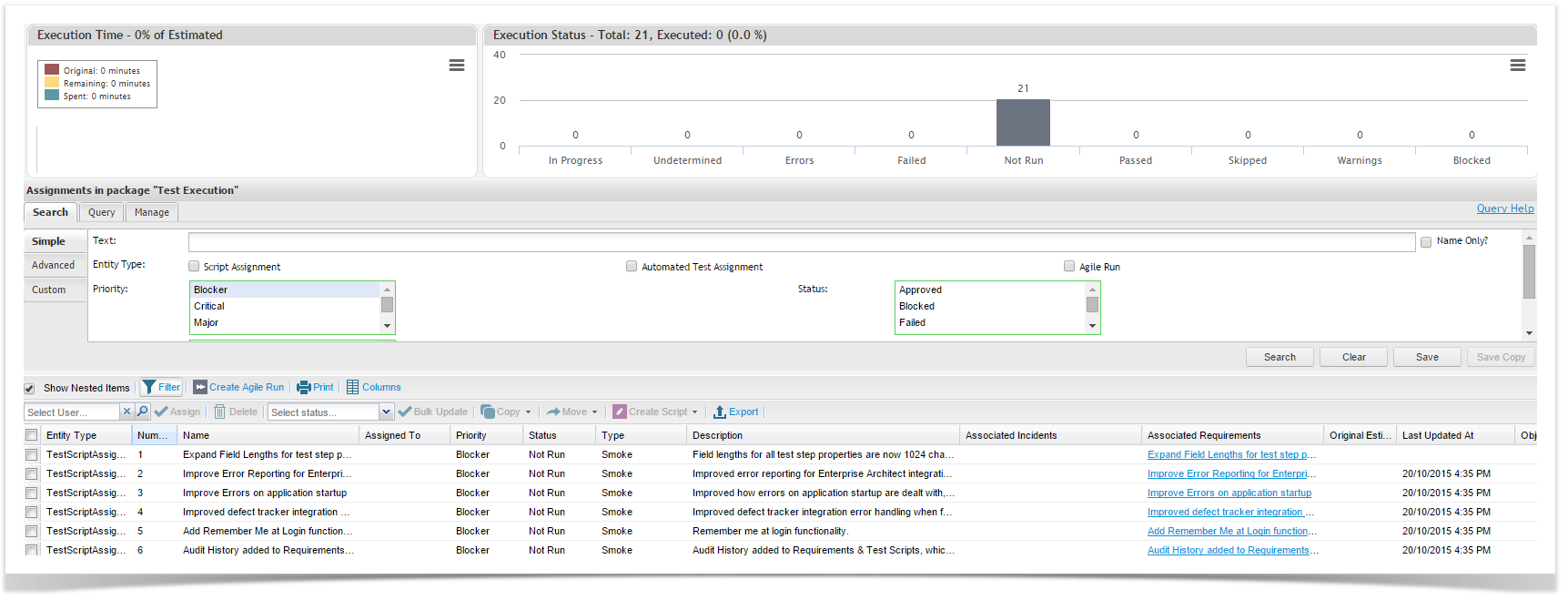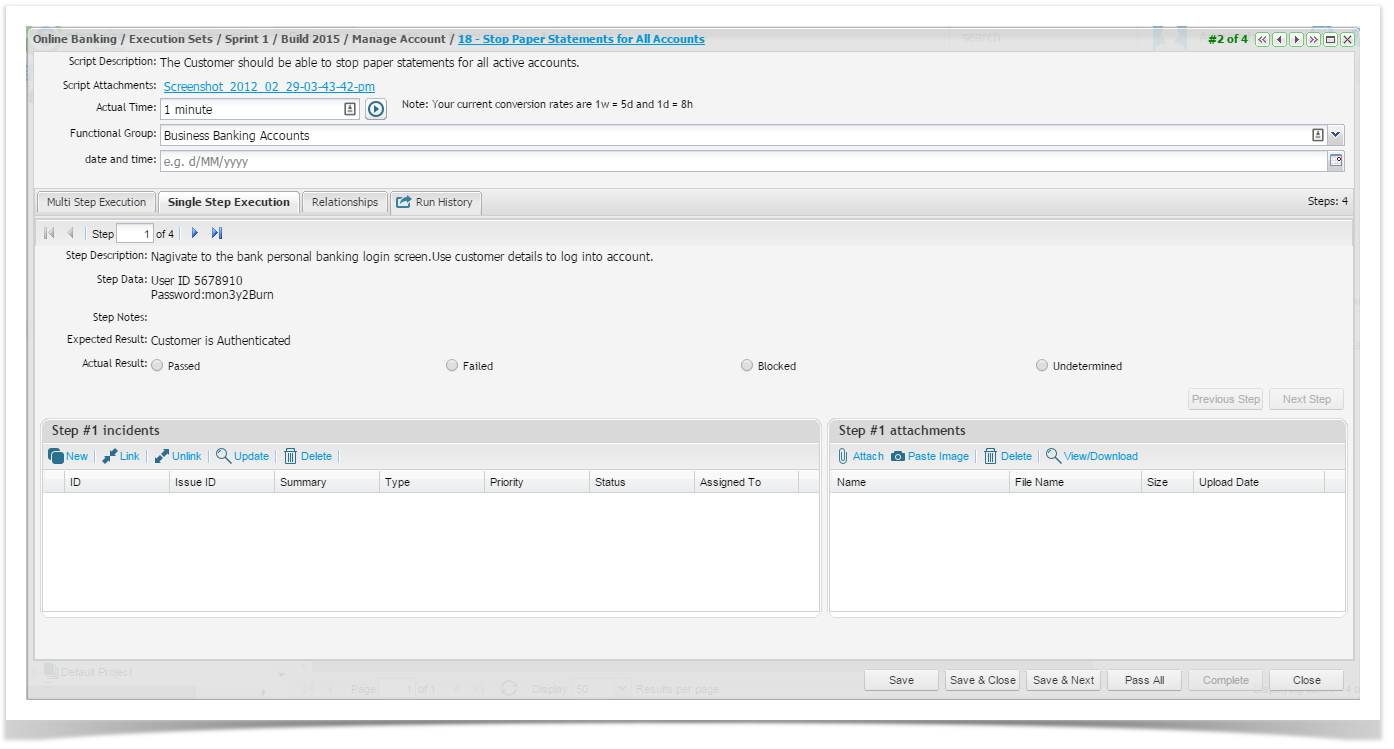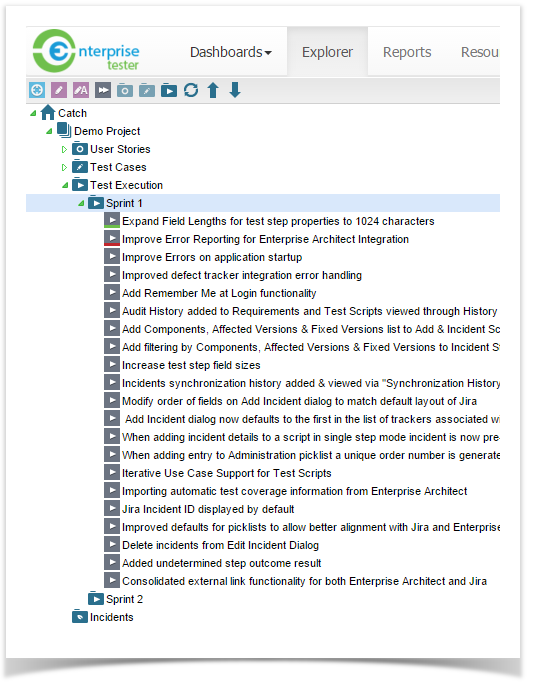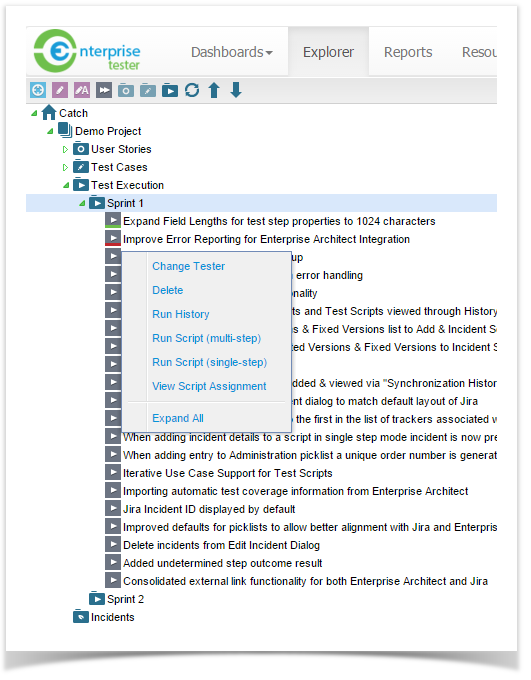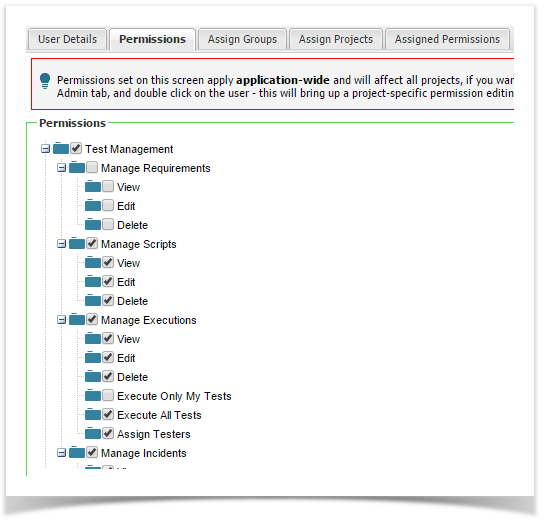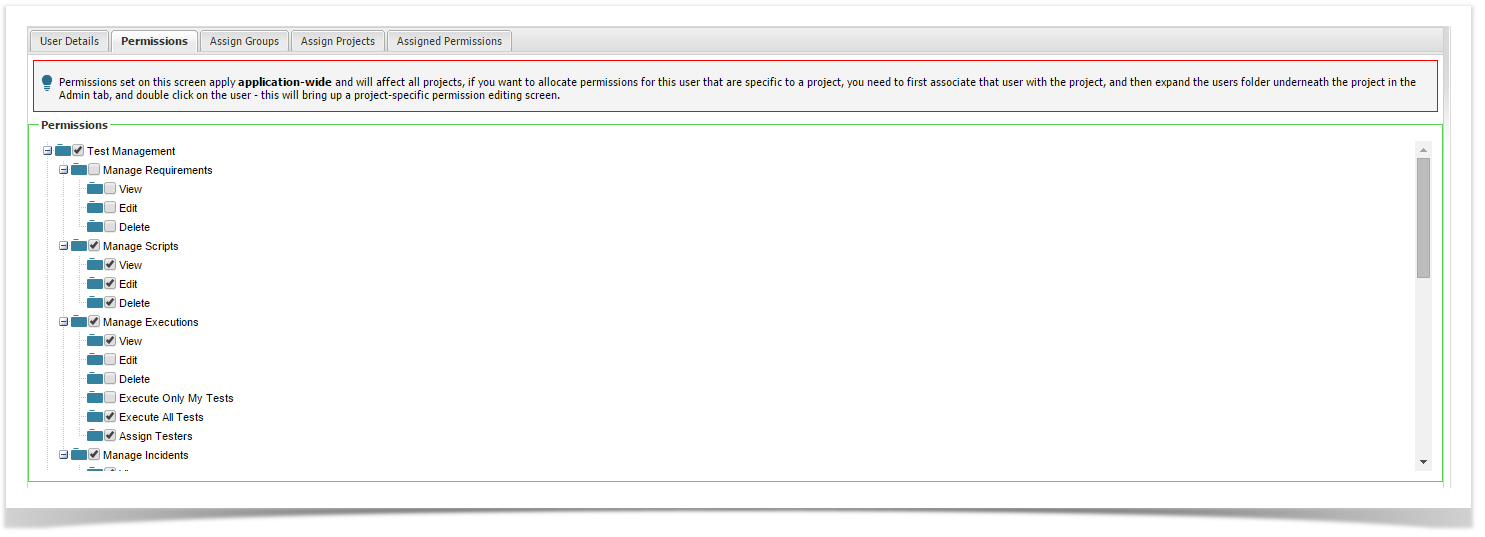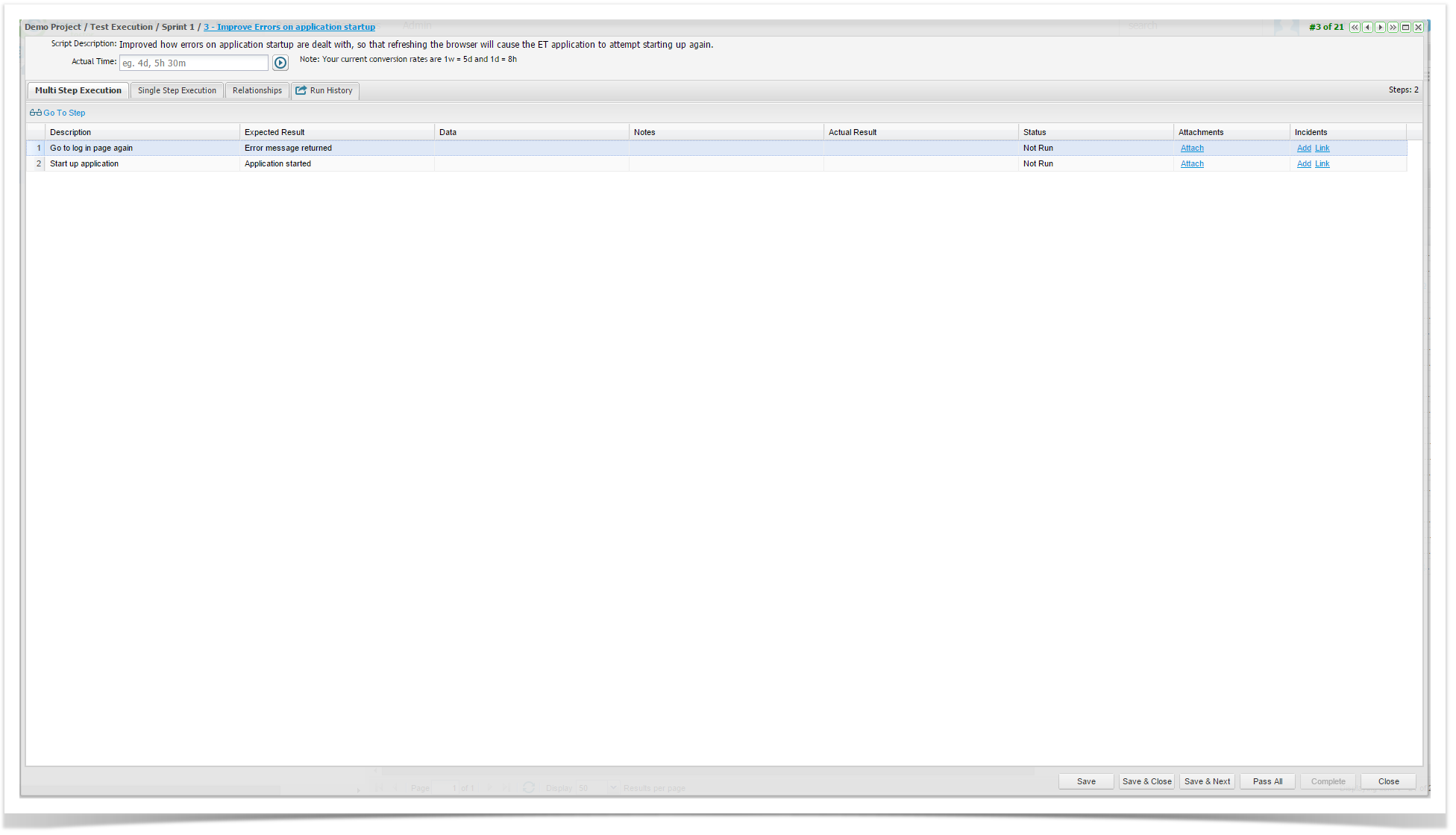Create Test Execution Data
Using the Test Scripts you have already created, add them to the Execution Sets folder for your Project, to do this you can by either of the following methods:
- In the tree, select a single Test Script or an entire Test Script folder from the Script Library and drag it to your Test Execution folder.
- From the grid, tick one or more check boxes to select Test Scripts, click the Create Execution button in the tool bar and select the destination folder.
The selected Test Scripts will be copied into the destination Execution Set folder ready for Test Execution.
Once Test Execution data exists in a folder, you can view information of the related script including: Script Description, Objects, Pre and Post Conditions, Notes and all Custom Fields.
Organizing Test Execution Data
You can reorganize information within the Test Execution folders by dragging and dropping via the tree, or from the grid tick one or more check boxes to select Test Execution data and click the Move button in the tool bar, select the destination folder.
Where a large number of tests have been created within a single folder, it may be helpful to filter these records into more manageable groups.
To do this:
- Double click the Execution Set folder.
- Click on the Filter button and select the criteria to filter by.
- Click on Search to filter records and display results.
Test Scripts can be copied from one project to another.
Execution Set data can only be created from Test Scripts within the same Project.
Choose a Test Execution View
You can execute tests in a grid view containing all steps, or in a single step view.
To choose your default view, go to My Profile and update the Default To Single-Step Execution setting.
Multi Step Execution (Grid View)
Double click on the test to be executed.
Select the Multi Step Execution tab.
- Type in the results and select the status for the test step.
- Attachments can be added to each step.
- Incidents can be added or you can link to an existing incident in Enterprise Tester or your external system.
- In the title bar there is a link to the related Test Script. If you have permissions you can click on this link and update the Script or you can edit the Test Execution data directly which will update the Test Script automatically.
- A stop watch feature is included for recording actual time spent testing. You can start and stop the time as required, close and come back to the run at a later time.
- The Run screen allows you to easily navigate to the Next or Previous scripts by using the arrow buttons located in the top right corner.
- Save and Next buttons allow you to move to the script on the list on your summary screen.
- Testers also have the option to change the status of all steps to Pass by clicking the Pass All button and click on Save.
- The test execution will be saved. To view more information on the test step, click on the plus button to expand the individual steps to provide more information.
Single Step Execution
- Double click on the test to be executed.
- Select the Single Step Execution tab.
- In the title bar there is a link to the related Test Script. If you have permissions you can click on this link and update the Script or you can edit the Test Execution data directly which will update the Test Script automatically.
- A stop watch feature is included for recording actual time spent testing. You can start and stop the time as required, close and come back to the run at a later time.
- The Run screen allows you to easily navigate to the Next or Previous scripts by using the arrow buttons located in the top right corner.
- Type in the results, notes and select the Status for the test step etc.
- Click on the Save button.
Ways to Start Test Execution
You can start your test run in a number of ways:
- Double click Test Execution data on the grid.
- Double click Test Execution data in the Explorer tab via the tree.
. - Right click on the Execution Data and select either 'Run Script (multi-step)' or 'Run Script (single-step)' from the menu.
Edit Test Scripts During Test Execution
When performing Test Execution, you can automatically edit the following fields of a Test Script provided the correct Permissions have been given:
- Description
- Expected Results
- Data
- Notes
Permissions that will allow users to update Test Scripts during Test Execution are:
- Manage Scripts View and Edit
- Manage Executions View and Edit
- Execute All Tests / Execute Only My Tests
If Test Execution has been completed then users cannot update Description, Expected Results, Data, Notes and Status fields.
Actual Results, Data and Attachments can be added at any time.
Prevent Editing Test Scripts During Test Execution
To stop users from automatically updating Test Scripts while performing Test Execution:
Remove the Manage Executions Edit permission.
How Test Script Changes Affect Test Execution
If Test Execution data is created where the status is “Not Run” and the related Test Script is subsequently changed, your Execution data will be updated to reflect changes made in the Test Script.
If your Test Execution is mid-run, and the related Test Script is changed at the time the test is being run, your Execution data will not be changed automatically.
If a Test Execution window in mid-run is closed and re-opened, and if the related Test Script has changed in the interim you will be prompted to either continue or restart the run.
Historical runs will not be affected.
Relationships
You can view Test Execution relationships from the Relationships tab.
Test Execution relationships are automatically inherited from the related Test Script, which may in turn have other associations.
If an Incident is logged during Test Execution, a relationship to that Incident is automatically created.
Run History
The Run History tab shows the details of all previous runs of this Execution data including the version of the Test Script that was used.

